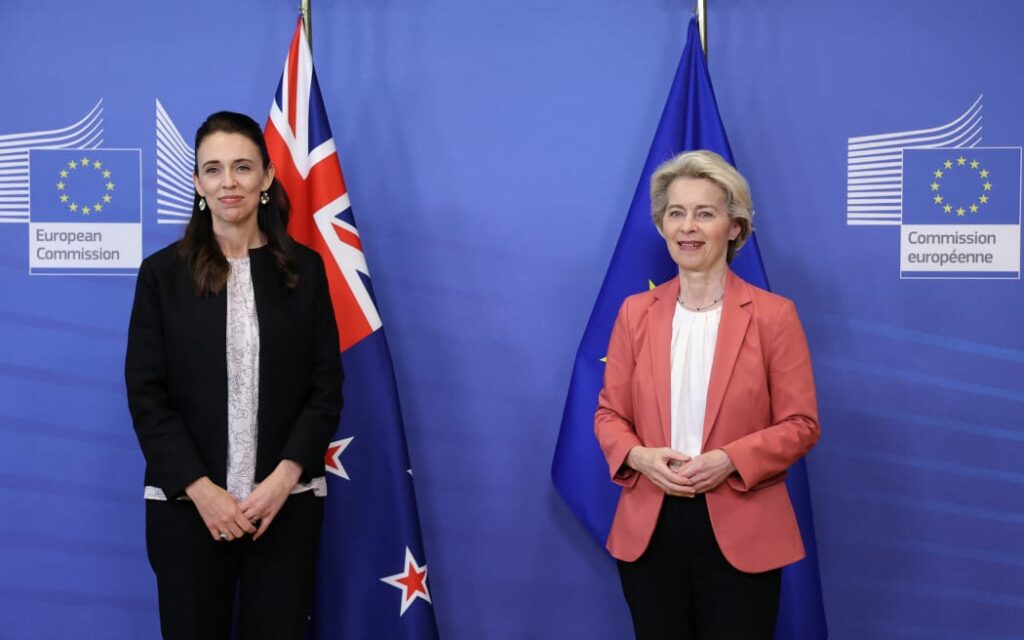
The European Union (EU) and New Zealand concluded a bilateral free trade agreement (FTA) on June 30th. This is the 6th FTA the EU has negotiated, over the past decade, with parties to the WTO Government Procurement Agreement (GPA). The others are with Canada, Japan, South Korea, Singapore, and the United Kingdom. In those agreements, the parties have extended their covered procurement beyond their GPA commitmens. This post examines the government procurement provisions in the new FTA
The EU-New Zealand FTA reflected the EU’s continued pursuit of expanded access to subcentral entities. New Zealand significantly expanded its GPA coverage list of subcentral entities from 18 to 88. However, it limited the commitments of the newly covered city, district, and regional councils to transport projects funded by the New Zealand Transport Agency. New Zealand also expanded its coverage of other entities from 19 under the GPA to 82. According to the EU, this coverage comprises all public authorities whose procurement is regulated by the New Zealand Procurement Rules. They include Crown Agents, Autonomous Crown Entities, Independent Crown Entities, Crown Entity companies, and Public Finance Act Schedule 4A Companies. The FTA also commits the parties to enter negotiations to improve coverage of subcentral and other entities if New Zealand’s local authorities, state services, or state sector entities are covered under another international trade agreement or required to follow New Zealand’s Government Procurement Rules.
The EU reciprocated with coverage of the procurement of health-related goods (pharmaceuticals and medical devices) by regional government entities and the procurement of public utility providers in the fields of ports and airports.
New Zealand added two central government entities to its GPA list: the Ministry of Housing and Urban Development and the Pike River Recovery Agency. For its part, the EU provides New Zealand with access to the approximately 200 entities it denied New Zealand when it joined the GPA in 2015. The two partners did not expand their GPA-coverage of services: New Zealand excludes the same services, and the EU maintains its positive list of covered services.
The FTA incorporated most of the GPA and added several disciplines. They require the electronic publication of all notices and contract awards, prohibit limits on the number of suppliers invited to submit a tender “with the intention of avoiding effective competition.” The FTA also allows procuring entities “to take into account environmental, labour and social considerations related to the object of the procurement,” provided they are non-discriminatory and are indicated in the notice of intended procurement or tender documentation. It further permits the parties to take appropriate measures to ensure compliance with their national and international environmental, labor, and social laws, regulations, obligations and standards provided that they are not discriminatory. In addition, as in other EU FTAs, the EU-New Zealand FTA prohibits requiring prior experience in the territory of a party. The procurement chapter also includes provisions on modifications of coverage, similar to earlier EU FTAs.
After a legal scrub, translation into EU languages, and adoption by the Council of the EU, the EU and New Zealand will sign the FTA. They will implement it following the European Parliament’s approval and New Zealand’s ratification.
Jean Heiman Grier
July 25, 2022
Related Posts
Major Procurement Gains in Canada-EU Agreement
EU-Japan FTA: Examining Procurement Commitments
EU-Japan Trade Pact: Government Procurement
EU-Singapore FTA: Procurement Expanded
Post Permalink: https://trade.djaghe.com/eu-new-zealand-fta-procurement/

